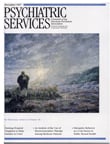Overcoming Service Barriers for Homeless Persons With Serious Psychiatric Disorders
Abstract
OBJECTIVE: To help homeless persons with comorbid psychiatric and substance use disorders gain access to community services, in 1993 the Center for Mental Health Services implemented the five-year Access to Community Care and Effective Services, or ACCESS program, in 15 cities. One aim of the program is to encourage collaboration between agencies serving the multiple needs of this population. This study examined the extent of linkages between agencies in the 15 demonstration cities. METHODS: One respondent from each of the 1,060 community-based programs in the 15 cities rated the extent to which his or her agency was linked with each of the other agencies in the local community in 1994 and again in 1996. Overall, there were 20,801 potential pairwise linkages. Linkages were classified into four types: a mutual tie, in which both agencies send and receive clients; a unidirectional tie, in which one agency sends and the other receives; an attempted tie, in which one agency sends but the other agency does not confirm receiving; and an unattempted tie. RESULTS: In 1994 and 1996, of the 20,801 pairs of potential service linkages, about a third were in place, while the remaining two-thirds were absent. Overall, linkages showed a slight but significant increase between 1994 and 1996. More than half of the linkages changed in type, indicating fluid service systems. CONCLUSIONS: Linkages between community agencies serving homeless persons with comorbid psychiatric and substance use disorders are not extensive. However, they increased slightly under the first two years of the ACCESS program, and there are good reasons to anticipate greater improvements in the future.



